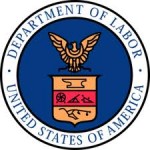- Home
- News
- Features
- Topics
- Labor
- Management
- Opinions/Blogs
- Tools & Resources
Home » Archives by category » Behavioral Competencies
- Celebrating the Resilience of Low-Income Women

- CEOs Get to Retire Comfortably. Workers Like Me Deserve the Same.

- Jobs Increased 339,000 In May, Unemployment Up 0.3% To 3.7%

- The decline of job creation at new establishments

- Contractor faces 2 serious citations after US Department of Labor finds safety failures led to welder’s death at Bonner Bridge demolition project

- Investigation into worker’s severe arm injury finds Cusseta auto parts manufacturer, supplier willfully ignored safety precautions

- ‘It’s a sweat factory’: Instacart workers ready to strike for pay and conditions

- Ships backed up outside US ports pumping out pollutants as they idle

- Privacy fears as Moscow metro rolls out facial recognition pay system
- ‘We are not machines’: Hollywood workers poised to strike for better conditions
- Boeing pilot indicted for allegedly deceiving US regulators over 737 Max
- Ipswich apprentice butcher encourages others to consider industry

- Ipswich apprentice butcher encourages others to consider industry

- Over 10,000 John Deere workers strike over ‘years’ of poor treatment
- Corporations are pledging to be ‘water positive’. What does that mean?
- US Department of Labor investigation of crane collapse, double fatality on Interstate 10 finds Lufkin company failed to assemble crane properly

- For the 6th time in 7 years, federal inspectors find Illinois contractor putting construction workers at risk of industry’s deadliest hazard

- US Department of Labor proposes $83K in fines to healthcare facility for failing to protect workers from coronavirus hazards

- Facebook says it will do more to prevent online hate, harassment
- As U.S. prepares to reopen border, some urge Canada to relax testing requirement
- Biden orders companies to ease supply chain bottlenecks or he’ll ‘call them out’
- What is the ‘new model’ the EU is proposing for Northern Ireland?
- Apple to make 10 million fewer iPhones due to microchip shortage
- US Department of Labor, Mexican Consulate in Boston enter alliance to promote workplace safety, health among New England’s workers

- US Department of Labor sues Austin luxury car dealer that retaliated against employee who raised concerns of coronavirus hazards

- Vaccine hesitant New Yorkers consider leaving the city as mandates take effect
- Carbon emissions ‘will drop just 40% by 2050 with countries’ current pledges’
- House passes bill to raise US debt ceiling through early December
- ‘The stakes couldn’t be higher’: GE urged to invest in green US jobs
- Zellers returns — kind of — but the lowest price isn't quite the law
- Cement makers across world pledge large cut in emissions by 2030
- India faces electricity crisis as coal supplies run critically low
- California justice department to investigate enormous oil spill
